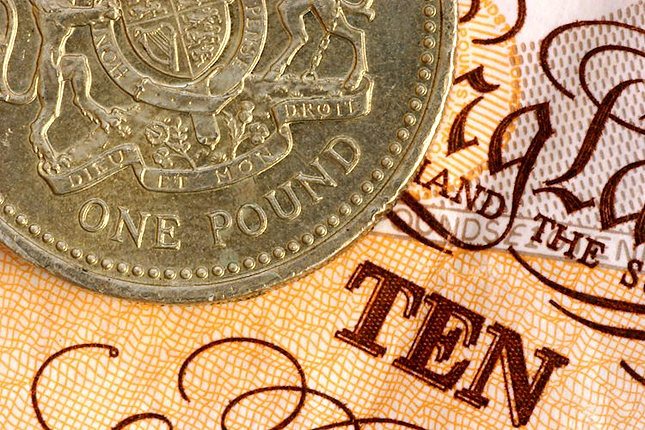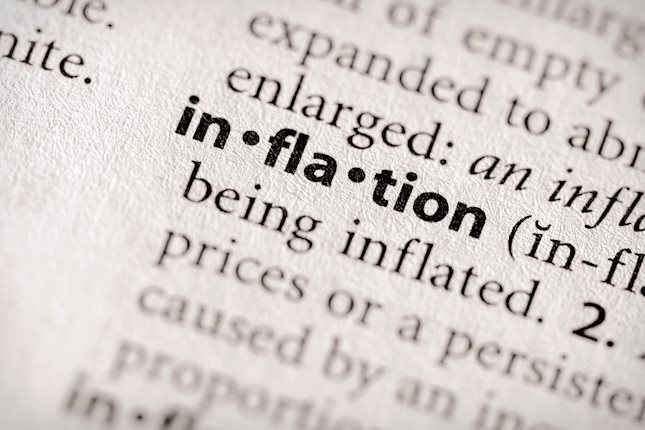- EUR/USD dips to near 1.0830 as investors turn cautious ahead of Eurozone/US inflation data.
- ECB Knot advised the use of a gradual rate-cut approach due to dynamic components such as inflation, demand, and wage growth.
- The US Dollar bounces back as investors expect the Fed to start reducing interest rates in the last quarter of the year.
EUR/USD falls to 1.0830 in Wednesday’s New York session after failing to recapture a two-month high near 1.0900 on Tuesday. The near-term outlook of the major currency pair turns uncertain as investors shift focus to the release of the Eurozone preliminary Consumer Price Index (CPI) data for May and the United States (US) core Personal Consumption Expenditure Price Index (PCE) data for April, which will be published on Friday.
The Eurozone CPI and US core PCE inflation data will significantly influence market speculation for interest rate cuts by the European Central Bank (ECB) and the US Federal Reserve (Fed).
The Fed’s preferred inflation measure is estimated to have grown steadily on a monthly and annual basis at 0.3% and 2.8%, respectively.
The US Dollar Index (DXY), which tracks the Greenback’s value against six major currencies, extends recovery to 104.80. The sharp recovery in the US Dollar is prompted by dismal market sentiment. Investors turn risk-averse after traders pare Fed rate cut bets for the September meeting as officials have been guiding to keep interest rates at their current levels until they see significant progress in the disinflation process. Currently, investors expect the Fed to start reducing interest rates from the last quarter of the year.
Daily digest market movers: EUR/USD remains on backfoot despite German HICP beats estimates
- EUR/USD drops sharply near 1.0830 despite the release of a slightly hot German CPI data for May. Monthly headline CPI grew at a slower pace of 0.1% from the estimates of 0.2%. In the same period, the harmonized inflation rose by 0.2% as expected. Annual headline inflation data grew in line with estimates of 2.4%. The pace at which headline inflation rose was higher than the prior reading of 2.2%. The harmonized inflation rose strongly by 2.8% from the consensus of 2.7% and the former reading of 2.4. The German inflation data will have a significant impact on the European Central Bank’s interest rate outlook as the nation is the largest contributor to the Eurozone’s Gross Domestic Product (GDP).
- Currently, the ECB is widely anticipated to roll back its restrictive interest rate framework, which has been maintained since July 2022. Therefore, investors are interested to know more about how far and fast the ECB will cut its key borrowing rates beyond June. ECB policymakers are reluctant to commit to any subsequent rate cut path and want to remain data-dependent.
- Earlier this week, ECB policymaker and French central bank governor François Villeroy de Galhau rebuffed suggestions of one rate cut each quarter and said, "I don't say that we should commit already in July, but let us keep our freedom on the timing and pace."
- On Tuesday, ECB governing council member and Dutch central bank chief Klaas Knot advised adopting a gradual rate-cut approach and making decisions on interest rates based on quarterly economic projections. Knot highlighted that March projections suggested three or four rate cuts would be appropriate this year. However, recent data showed that wage growth has elevated and the Manufacturing PMI has improved, which undermines the projected rate-cut path based on March’s data.
Technical Analysis: EUR/USD recovery stalls near 1.0900
EUR/USD faces sharp selling pressure as the US Dollar bounces back strongly. The major currency pair struggles to hold strength even though the breakout of the Symmetrical Triangle chart pattern formed on a daily timeframe.
The shared currency pair's near-term outlook remains firm, as it trades well above all short-to-long-term Exponential Moving Averages (EMAs).
The 14-period Relative Strength Index (RSI) has slipped into the 40.00-60.00 range, suggesting that the momentum, which was leaned toward the upside, has faded for now.
ECB FAQs
The European Central Bank (ECB) in Frankfurt, Germany, is the reserve bank for the Eurozone. The ECB sets interest rates and manages monetary policy for the region. The ECB primary mandate is to maintain price stability, which means keeping inflation at around 2%. Its primary tool for achieving this is by raising or lowering interest rates. Relatively high interest rates will usually result in a stronger Euro and vice versa. The ECB Governing Council makes monetary policy decisions at meetings held eight times a year. Decisions are made by heads of the Eurozone national banks and six permanent members, including the President of the ECB, Christine Lagarde.
In extreme situations, the European Central Bank can enact a policy tool called Quantitative Easing. QE is the process by which the ECB prints Euros and uses them to buy assets – usually government or corporate bonds – from banks and other financial institutions. QE usually results in a weaker Euro. QE is a last resort when simply lowering interest rates is unlikely to achieve the objective of price stability. The ECB used it during the Great Financial Crisis in 2009-11, in 2015 when inflation remained stubbornly low, as well as during the covid pandemic.
Quantitative tightening (QT) is the reverse of QE. It is undertaken after QE when an economic recovery is underway and inflation starts rising. Whilst in QE the European Central Bank (ECB) purchases government and corporate bonds from financial institutions to provide them with liquidity, in QT the ECB stops buying more bonds, and stops reinvesting the principal maturing on the bonds it already holds. It is usually positive (or bullish) for the Euro.
Information on these pages contains forward-looking statements that involve risks and uncertainties. Markets and instruments profiled on this page are for informational purposes only and should not in any way come across as a recommendation to buy or sell in these assets. You should do your own thorough research before making any investment decisions. FXStreet does not in any way guarantee that this information is free from mistakes, errors, or material misstatements. It also does not guarantee that this information is of a timely nature. Investing in Open Markets involves a great deal of risk, including the loss of all or a portion of your investment, as well as emotional distress. All risks, losses and costs associated with investing, including total loss of principal, are your responsibility. The views and opinions expressed in this article are those of the authors and do not necessarily reflect the official policy or position of FXStreet nor its advertisers. The author will not be held responsible for information that is found at the end of links posted on this page.
If not otherwise explicitly mentioned in the body of the article, at the time of writing, the author has no position in any stock mentioned in this article and no business relationship with any company mentioned. The author has not received compensation for writing this article, other than from FXStreet.
FXStreet and the author do not provide personalized recommendations. The author makes no representations as to the accuracy, completeness, or suitability of this information. FXStreet and the author will not be liable for any errors, omissions or any losses, injuries or damages arising from this information and its display or use. Errors and omissions excepted.
The author and FXStreet are not registered investment advisors and nothing in this article is intended to be investment advice.
Recommended content
Editors’ Picks

EUR/USD extends recovery beyond 1.0550 on renewed USD weakness
EUR/USD preserves its bullish momentum and trades above 1.0550 in the American session on Wednesday. The US Dollar (USD) struggles to find demand following the mixed macroeconomic data releases from the US, helping the pair push higher ahead of US PCE inflation data.

GBP/USD advances toward 1.2650, US PCE data eyed
GBP/USD extends the bullish momentum to trade near 1.2650 in the second half of the day on Wednesday. The pair benefits from a sustained US Dollar weakness ahead of the Thanksgiving Day holiday. Investors await PCE Price Index figures for October.

Gold climbs to $2,650 area as US yields push lower
Gold builds on Tuesday's gains and trades at around $2,650 in the American session. The benchmark 10-year US Treasury bond yield is down more than 1% on the day below 4.3%, helping XAU/USD continue to push higher.

US core PCE inflation set to hold steady, raising doubts on further Federal Reserve rate cut
The United States Bureau of Economic Analysis (BEA) is set to release the Personal Consumption Expenditures (PCE) Price Index data for October on Wednesday at 15:00 GMT.

Eurozone PMI sounds the alarm about growth once more
The composite PMI dropped from 50 to 48.1, once more stressing growth concerns for the eurozone. Hard data has actually come in better than expected recently – so ahead of the December meeting, the ECB has to figure out whether this is the PMI crying wolf or whether it should take this signal seriously. We think it’s the latter.

Best Forex Brokers with Low Spreads
VERIFIED Low spreads are crucial for reducing trading costs. Explore top Forex brokers offering competitive spreads and high leverage. Compare options for EUR/USD, GBP/USD, USD/JPY, and Gold.
